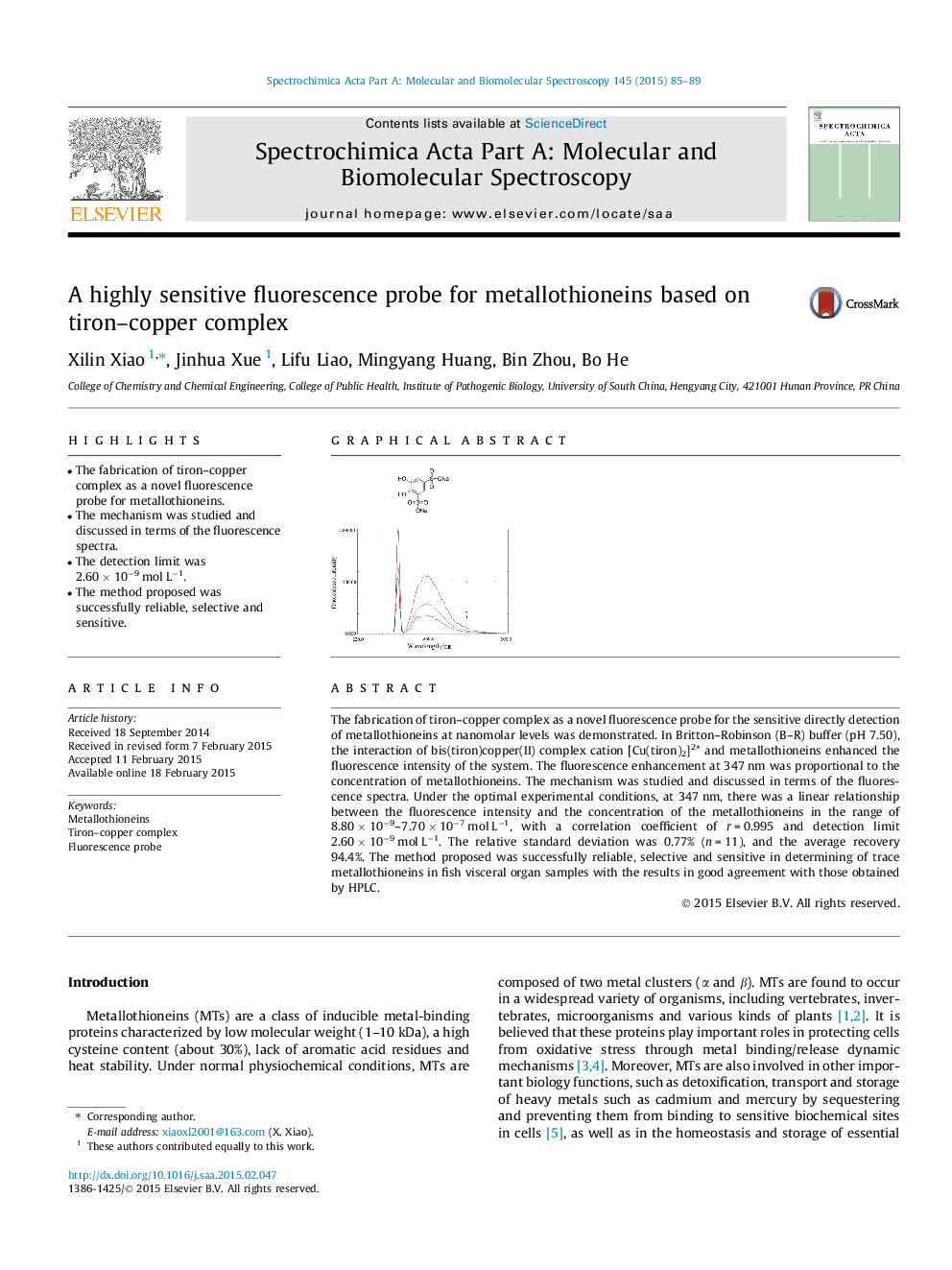| Article ID | Journal | Published Year | Pages | File Type |
|---|---|---|---|---|
| 1228961 | Spectrochimica Acta Part A: Molecular and Biomolecular Spectroscopy | 2015 | 5 Pages |
•The fabrication of tiron–copper complex as a novel fluorescence probe for metallothioneins.•The mechanism was studied and discussed in terms of the fluorescence spectra.•The detection limit was 2.60 × 10−9 mol L−1.•The method proposed was successfully reliable, selective and sensitive.
The fabrication of tiron–copper complex as a novel fluorescence probe for the sensitive directly detection of metallothioneins at nanomolar levels was demonstrated. In Britton–Robinson (B–R) buffer (pH 7.50), the interaction of bis(tiron)copper(II) complex cation [Cu(tiron)2]2+ and metallothioneins enhanced the fluorescence intensity of the system. The fluorescence enhancement at 347 nm was proportional to the concentration of metallothioneins. The mechanism was studied and discussed in terms of the fluorescence spectra. Under the optimal experimental conditions, at 347 nm, there was a linear relationship between the fluorescence intensity and the concentration of the metallothioneins in the range of 8.80 × 10−9–7.70 × 10−7 mol L−1, with a correlation coefficient of r = 0.995 and detection limit 2.60 × 10−9 mol L−1. The relative standard deviation was 0.77% (n = 11), and the average recovery 94.4%. The method proposed was successfully reliable, selective and sensitive in determining of trace metallothioneins in fish visceral organ samples with the results in good agreement with those obtained by HPLC.
Graphical abstractFigure optionsDownload full-size imageDownload as PowerPoint slide
